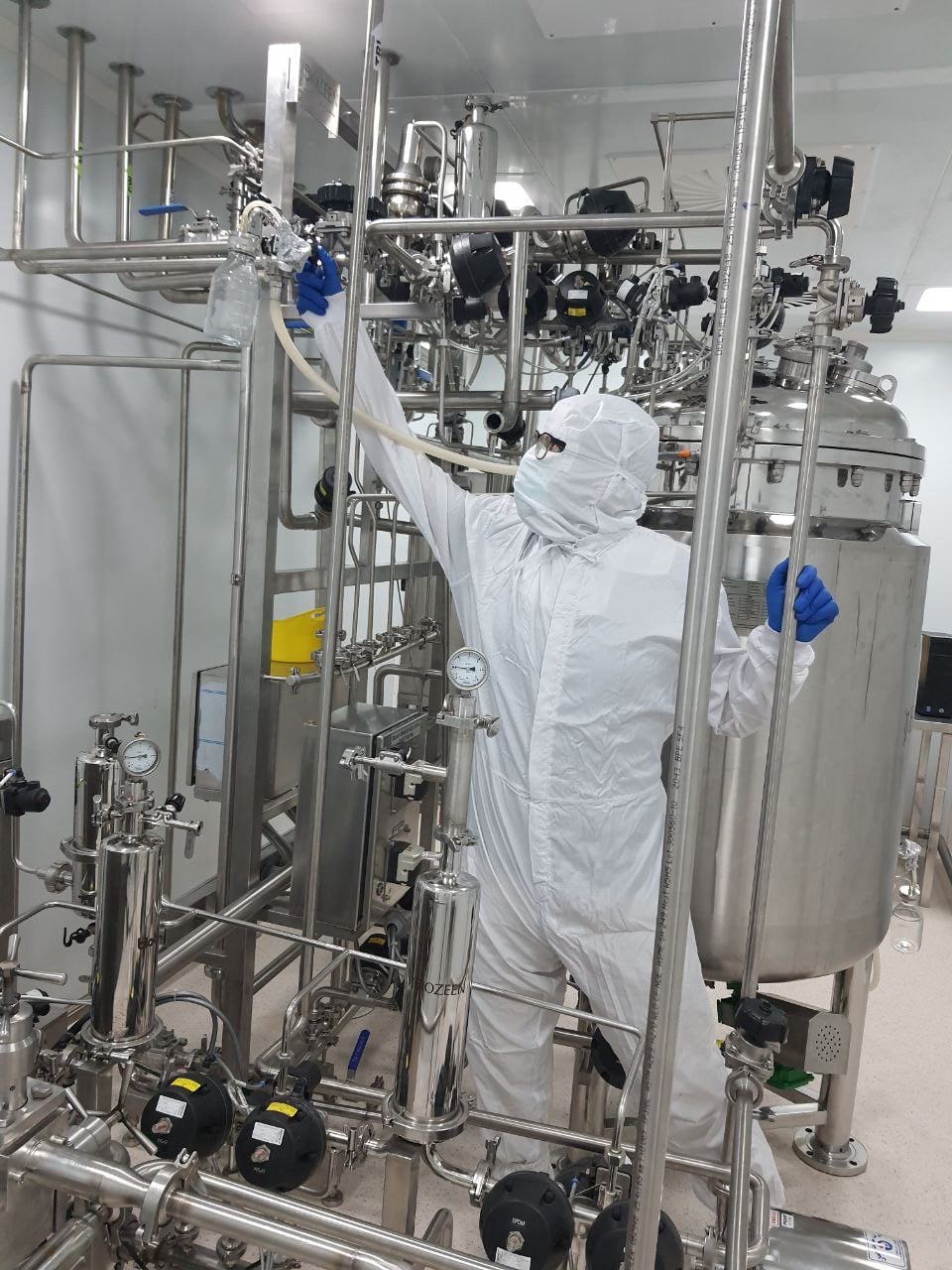Viral disease

Newcastle disease
Newcastle disease is a highly contagious and severe disease affecting birds, including domestic poultry. It results from a virus in the paramyxovirus family. Newcastle disease manifests in three forms:
- Lentogenic (mild): Widespread but causes few outbreaks.
- Mesogenic (moderate).
- Velogenic (very virulent or exotic).
Clinical presentation includes respiratory symptoms, depression, nervous manifestations, or diarrhea
Epidemiology
This disease affects all ages and has a high severity and the rate of transmission and death rate is high and it also happens in all species of birds. During the studies conducted in 1392-1393, the highest percentage of farms affected by Newcastle disease were related to Mazandaran (37%) and Isfahan (22%) provinces. As a result, Newcastle virus has been circulating in the country’s industrial broiler chicken farms during the studied period and has a high incidence.
Transmission
- Direct Contact with Diseased or Carrier Birds:
Newcastle primarily spreads through close contact with infected birds. Whether diseased or carriers, these birds can transmit the virus. Shedding of the virus occurs through feces, respiratory discharges, and other bodily secretions.
- Environmental Contamination:
Infected birds contaminate their surroundings by shedding the virus in feces. Transmission can occur when healthy birds come into direct contact with contaminated surfaces, such as shared perches, feeders, or water sources. Even human clothing and equipment can inadvertently carry the virus.
- Survival in the Environment:
Newcastle disease viruses are hardy and resilient. They can persist in the environment for several weeks, especially in cooler weather. This resilience allows the virus to remain a threat even after the initial outbreak.
- Incubation Period and Recovery:
During the incubation period (the time between exposure and symptom onset), infected birds shed the virus. Additionally, a brief shedding phase occurs during recovery. Remarkably, some birds from the pigeon family intermittently shed the virus for up to a year or more.
- Wild Birds as Vectors:
Cormorants and other wild species have been implicated in causing outbreaks among domestic flocks.
- Virus Throughout the Carcass:
Every part of an infected bird’s carcass harbors the virus. From feathers to internal organs, all can potentially transmit Newcastle.
- High Contagiousness:
Newcastle is exceptionally contagious. When the virus infiltrates a susceptible flock, almost all birds become infected within a remarkably short span of two to six days.
signs and diagnostic methods
Clinical Signs of Newcastle Disease depends on several factors:
- Virus Strain
- Bird Species
- Host Age
- Concurrent Infections
- Environmental Stress and Immune Status
- Extremely Virulent Strains
- Rapid Onset
- Spread Within Flocks
Respiratory Signs:
- Gasping, coughing, sneezing, and rales (abnormal respiratory sounds).
Nervous Signs:
- Tremors, paralyzed wings and legs, twisted necks, circling behavior, spasms, and paralysis.
Digestive Signs:
Egg Production Impact:
- A partial or complete drop in egg production.
- Abnormalities in egg color, shape, or surface.
- Watery albumen (egg white).
Diagnostic Methods:
Newcastle can resemble avian influenza clinically, so laboratory testing is crucial.
Virus Isolation and Characterization: Preferred method for diagnosis.
The WOAH Manual of Diagnostic Tests and Vaccines for Terrestrial Animals provides guidelines for laboratory procedures.
Techniques include both molecular and in vivo testing.
prevention and control
Prophylactic Vaccination:
Most countries with commercial poultry production practice vaccination. Effective biosecurity procedures are crucial to prevent disease incursion.
Strict Isolation or Quarantine of outbreaks.
Humane Destruction of all infected and exposed birds.
Thorough Cleaning and Disinfection of premises.
Proper Carcass Disposal.
Pest Control within flocks.
Depopulation, followed by 21 days without poultry before restocking.
Avoidance of Contact with birds of unknown health status.
Control of Access to poultry farms.
Gumboro
Gumboro disease is a significant ailment affecting poultry worldwide. it is caused by the Infectious Bursal Disease Virus (IBDV), belonging to the genus Avibirnavirus in the family Birnaviridae.
Affected Species: IBDV infects chickens, turkeys, ducks, guinea fowl, and ostriches. However, it primarily causes clinical disease in young chickens.
Epidemiology:
Gumboro virus mostly spreads in hot and humid areas.
Transmission
of Gumboro disease (also known as Infectious Bursal Disease) primarily occurs through oral-fecal routes.
- Ingestion of Contaminated Material:
Chickens become infected when they ingest feed, water, or other materials contaminated with the Infectious Bursal Disease Virus (IBDV).
- Virus Shedding:
Infected birds shed the virus in their feces, which can contaminate the environment.
- Contaminated Environment:
The virus persists in the environment, especially in areas with high poultry density.
- Direct Contact:
Chickens can contract the virus by direct contact with contaminated surfaces or other infected birds.
- Vertical Transmission:
Infected hens can transmit the virus to their offspring through the eggshell, leading to early infection in chicks.
- Aerosol Transmission:
The virus can spread through the air, but this route is less significant compared to oral-fecal transmission.
- Mechanical Vectors:
Equipment, clothing, and personnel can inadvertently carry the virus from one location to another.
Diagnostic
- Clinical IBD:
Diagnosis can be based on characteristic signs observed in affected birds. These signs include depression, ruffled feathers, droopy appearance, and pecking at the vent. Mortality typically peaks 3 to 7 days post-infection.
- Post-Mortem Examination:
Gross lesions in the bursa of Fabricius (lymphoid depletion) are indicative of IBD. These lesions are essential for confirming clinical IBD12.
- Humoral Immune Response
- Agar Gel Immunodiffusion (AGID):
Uses bursal homogenate as an antigen against known positive antiserum.
- Antigen-Capture ELISAs (AC-ELISAs):
- Immunostaining:
- Reverse-Transcription Polymerase Chain Reaction (RT-PCR)
.
- Strain Characterization:
Pathotyping: Characterize IBDV strains in SAN chickens.
Antigenic Typing: Cross VN assays or tests with monoclonal antibodies.
Nucleotide Sequencing: Sequence RT-PCR products from both segments of the IBDV genome.
Serological Tests: AGID, VN, or ELISA: Detect antibodies in the flock. A small percentage of the flock can be tested, and positive reactions indicate infection.
Control
Vaccination: Live Vaccines and Inactivated Vaccines.
Hygiene Practices: Strictly maintain cleanliness in poultry houses, equipment, and surroundings.
Control Movement: Limit the introduction of new birds and monitor visitors.
Separation: Separate age groups to prevent cross-contamination.
Monitoring and Surveillance:
Clinical Observations: Regularly monitor flocks for clinical signs.
Laboratory Testing: Conduct serological tests (ELISA, VN) to assess immunity and detect outbreaks.
Necropsy and Histopathology: Examine bursae post-mortem for lesions.
Farm Personnel: Train farm workers on biosecurity practices and disease recognition.
Veterinarians: Educate veterinarians about IBD control measures.
Emergency Measures During Outbreaks:
Culling: Consider culling affected birds to prevent further spread.
Disinfection: Thoroughly disinfect affected premises.
Movement Restrictions: Restrict movement of birds and equipment.
Bronchitis
Avian infectious bronchitis (IB) is caused by the Gammacoronavirus infectious bronchitis virus (IBV). The virus causes infections mainly in chickens and is a significant pathogen of commercial meat and egg type birds.
Transmission
The disease is transmitted by the air-borne route, direct chicken-to-chicken contact and indirectly through mechanical spread (contaminated poultry equipment or egg-packing materials, manure used as fertiliser, farm visits, etc.).
signs
IB is an acute, contagious disease characterised primarily by respiratory signs in growing chickens. IB occurs world-wide and assumes a variety of clinical forms, the principal one being respiratory disease that develops after infection of the respiratory tract tissues following inhalation or ingestion. Infection of the oviduct at a very young age can lead to permanent damage and, in hens, can lead to cessation of egg-laying or production of thin-walled and misshapen shells with loss of shell pigmentation. IB can be nephropathogenic causing acute nephritis, urolithiasis and mortality, especially in young birds. After apparent recovery, chronic nephritis can produce death at a later time.
diagnostic methods
Virus Detection:
- Virus isolation:
IBV (infectious bronchitis virus) can be successfully isolated from tracheal mucosa and lung several days to one week after infection.
- Reverse-transcriptase polymerase chain reaction (RT-PCR):
Increasingly used to identify the spike (S) glycoprotein genotype of IBV field strains. Genotyping using primers specific for the S1 subunit of the S gene or sequencing of the same gene generally provides similar findings to serotyping by haemagglutination inhibition (HI) or virus neutralisation (VN) tests.
- Supplementary tests:
These include electron microscopy, use of monoclonal antibodies, immuno-histochemical or immunofluorescence tests, and immunisation–challenge trials in chickens. Specific pathogen-free chicken embryonated eggs or chicken tracheal organ cultures (TOCs) from embryos may be used for virus isolation.
- Serological Tests:
Commercial enzyme-linked immunosorbent assays (ELISA) kits are often used for monitoring serum antibody responses. These kits allow for general serological monitoring of vaccinal responses and field challenges.
- The haemagglutination inhibition (HI) test is used for identifying serotype-specific responses to vaccination and field challenges, especially in young growing chickens.
Control
Both live attenuated and oil emulsion inactivated vaccines are available. Vaccine and field strains of IBV may persist in the caecal tonsils of the intestinal tract and be excreted in faeces for weeks or longer in clinically normal chickens. There have been no reports of human infection with IBV.
Influenza
Avian influenza, commonly known as bird flu, is a highly contagious viral disease that impacts both domestic and wild birds. While birds are the primary hosts, avian influenza viruses have occasionally been found in mammals, including humans, although such cases are less frequent.
This intricate disease is caused by a diverse group of viruses, each classified into various subtypes (such as H5N1, H5N3, and H5N8). These viruses exhibit rapid genetic evolution. Avian influenza is a global concern, but the prevalence of specific subtypes varies across different regions.
The various strains of avian influenza viruses can be broadly categorized into two types based on their impact on poultry:
- Low Pathogenicity Avian Influenza (LPAI): This subtype typically results in minimal or no clinical signs in affected birds.
- High Pathogenicity Avian Influenza (HPAI): HPAI can cause severe clinical symptoms and potentially lead to high mortality rates among poultry.
Epidemiology
According to the studies conducted in the villages of Iran, about 88% of the birds were infected with influenza. As a result, the high prevalence of influenza in rural domestic poultry indicates the endemicity of this disease.
Transmission
Movement of Infected Birds:
As Infected birds move from place to place, they can carry the virus with them. Whether it’s migratory birds or domestic poultry, their movements contribute to the geographic spread of the disease.
Farming and Live Bird Markets:
Live bird markets serve as hubs for avian influenza transmission. Birds from various sources come together, creating an environment conducive to virus exchange. Farming practices, including the movement of birds between farms, can inadvertently introduce the virus to new locations.
Wild Birds and Migratory Routes:
Wild birds, especially waterfowl, are natural reservoirs for avian influenza viruses. They can carry the virus without showing symptoms. Migratory routes followed by these birds allow them to spread the virus across vast distances.
Viral Shedding in Birds:
Avian influenza viruses are excreted in bird feces and respiratory secretions. Direct contact with these secretions is a common mode of transmission.
Contaminated Feed and Water:
Birds can contract the virus by consuming contaminated feed or water. The virus can survive in the environment, making contaminated resources a potential source of infection.
Detection
Antibody Detection
The initial step aims to detect antibodies against any Avian Influenza virus. Positive samples from step 1 undergo the second step to identify the specific viral subtype causing the infection.
Viral Subtype Identification
The second step, performed on positive samples, identifies the exact AI viral subtype.
Laboratory Methods
Diagnosis involves isolating the virus or detecting and characterizing fragments of its genome.
Control
Early Detection and Early Warning
Swift identification of outbreaks is crucial. Surveillance systems should be in place to detect avian influenza cases promptly. Transparent notification mechanisms ensure timely reporting to relevant authorities.
Rapid Confirmation of Suspects
Efficient laboratory testing is necessary to confirm suspected cases. Rapid confirmation helps trigger appropriate response measures.
Rapid Response
Once an outbreak is confirmed, immediate actions are essential. Measures may include culling infected birds, implementing movement restrictions, and biosecurity protocols.
Improvement of Governance:
Strengthening legislation and allocating resources for avian influenza control. Collaborative efforts among countries and international organizations are vital.
Vaccination:
Under specific conditions, vaccination of poultry may be recommended.
